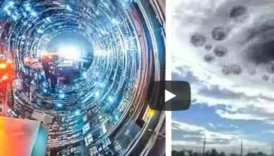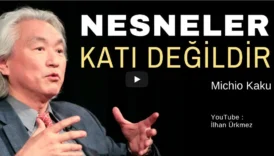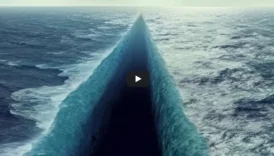The Newly Discovered “Forbidden Interview” with Tesla, 83 Years Later

Nikola Tesla. For many, the name immediately conjures images of electricity, magnetism, alternating current, and groundbreaking inventions. Yet, throughout his career, Tesla was more than just a brilliant engineer. He cultivated a remarkable reputation not only for pioneering technical achievements—like wireless energy transmission and high-voltage experiments—but also for his sweeping visions about the universe, immortality, human consciousness, and the potential future of civilization. It is no secret that Tesla wove an intricate tapestry of science and philosophy.
- The Newly Discovered “Forbidden Interview” with Tesla, 83 Years Later
- A Brief Biography of Nikola Tesla
- Early Life and Education
- Journey to the United States and First Major Achievements
- Colorado Springs and Wireless Transmission Experiments
- Later Years and Philosophical Pursuits
- The Discovery of the “Forbidden Interview”
- Mysterious Origins and Content
- Why Was It Supposedly Suppressed?
- Key Excerpts and Themes from the Interview
- “No One Actually Died” — Tesla on Immortality
- Unfinished Inventions and Titanic Ambitions
- Philosophical and Religious Reflections
- Human Flight Through Consciousness
- Cosmic Suffering and the Interconnectedness of All Things
- Views on Warfare, Peace, and Human Progress
- “Unconscious Creative Force” — Tesla’s Conception of God
- Modern Relevance and Parallels
- Did Tesla Actually Foresee the 21st Century?
- Groundbreaking Tech vs. Misattributed Myths
- Energy, Consciousness, and Moral Growth
- Tesla as a Philosopher: The Unity of Science and Spirit
- War, Politics, and Ethical Responsibilities
- Glimpses into Tesla’s Personal Life
- What Lies Ahead for Our World?
- Conclusion and Reflection
- Share Your Thoughts
- References (Academic Format)
Recently, a compelling story began circulating: a long-lost interview from 1930, in which Tesla apparently discusses topics that would have been considered taboo or “forbidden” for his era. The interview, claimed to have been buried or suppressed for over 83 years, covers Tesla’s radical perspectives on immortality, cosmic energies, spirituality, and how he believed humanity might eventually learn to harness unimaginable powers. While some of these claims remain unverified, the mere existence of such an interview has triggered widespread excitement among historians, scientists, and the broader public.
This article, delves into the details of the newly unearthed conversation, exploring the historical context of Tesla’s life, the bizarre and visionary content of the interview, and its potential implications for our modern world. We will analyze, compare, and dissect the text to see whether these ideas align with what we already know about Tesla’s documented theories. Along the way, we may also encounter new perspectives on technology, religion, warfare, cosmic energy, and the nature of the human spirit—subjects that Tesla reportedly pondered with as much passion and brilliance as he devoted to his better-known electrical experiments.
A Brief Biography of Nikola Tesla
Early Life and Education
Nikola Tesla was born in 1856 in the village of Smiljan, located in modern-day Croatia. From an early age, he exhibited an extraordinary ability to visualize complex concepts. Growing up in a family with a priest father and a mother known for her skill in crafting tools and mechanical devices, Tesla was encouraged to pursue intellectual and inventive interests. He studied at the Polytechnic in Graz and later in Prague, focusing on engineering and physics. Even as a young student, Tesla displayed remarkable analytical skills, often diving deep into the mysteries of electricity and its applications.
Journey to the United States and First Major Achievements
In 1884, Tesla emigrated to the United States, where he briefly worked with Thomas Edison—one of the most famous inventors of the era. A well-known clash between Tesla and Edison ensued, primarily centered on direct current (DC) versus alternating current (AC). While Edison championed DC systems, Tesla believed AC transmission to be more practical and efficient for large-scale power distribution. The so-called “War of the Currents” ensued, bringing Tesla into the limelight.
With the support of industrialists like George Westinghouse, Tesla’s AC system gained prominence. The success of the Niagara Falls power project and other developments cemented Tesla’s reputation as a visionary. Yet, despite these achievements, Tesla struggled with financial backing. Investors often found his later, more audacious projects too risky or too far-fetched, leaving many of his groundbreaking ideas confined to notebooks and laboratory sketches.
Colorado Springs and Wireless Transmission Experiments
By 1899, Tesla established a laboratory in Colorado Springs, where he performed experiments involving extremely high voltages and radio frequencies. He dreamed of transferring power wirelessly across vast distances. Some accounts claim that the sparks generated in his Colorado lab reached lengths of several meters and lit up the sky in brilliant arcs. Newspapers were fascinated by his claims about powering lamps miles away without wires. However, the lack of sustained funding eventually forced Tesla to halt or scale back many of these explorations.
Later Years and Philosophical Pursuits
In his later years, Tesla lived more reclusively, focusing on theoretical studies that combined science, engineering, and often a mystical reflection on the nature of reality. Reports suggest he delved into discussions of teleforce weapons (sometimes sensationalized as “death rays”), renewable energy concepts, and even cosmic rays. At the same time, Tesla began articulating philosophical viewpoints about the universe, life’s interconnectedness, the future of humankind, and the ethical responsibilities of scientific progress.
When Tesla passed away in 1943 at the age of 86, he left behind hundreds of patents, uncompleted projects, and countless speculative ideas. Since that time, historians and researchers have continued studying his notes and trying to decipher the full scope of his ambitions.
The Discovery of the “Forbidden Interview”
Mysterious Origins and Content
The recently revealed interview is purportedly dated around 1930, when Tesla was approximately 74 years old. Although the precise date remains disputed, the content—if genuine—seems to fit the time frame of Tesla’s advanced years, when his thinking had evolved beyond the purely technical. According to the story, this interview was never published or widely circulated, possibly because it contained ideas deemed too radical, even subversive, for that period. Alternatively, certain investors or editors might have wanted to hush Tesla’s statements out of fear that they would reduce his credibility.
In these documents, which reportedly survive as a set of handwritten journalist’s notes, the unnamed interviewer poses a variety of open-ended questions. Tesla’s responses delve into subjects including immortality, cosmic energy, religion’s limitations, the possibility of tapping into near-limitless energy sources, and humanity’s spiritual evolution. The text of the interview seems to read like a conversation—Tesla offering bold declarations on theoretical physics, spirituality, and what he perceived as the fate of humankind.
Why Was It Supposedly Suppressed?
During the early 20th century, there was widespread tension between tradition and modernity. Political and social institutions were conservative, wary of ideas challenging religious orthodoxy or mainstream scientific consensus. Tesla’s maverick stances on religion and “invisible energies” might have alarmed potential financiers who preferred to maintain a more practical image of technological progress. Moreover, Tesla’s references to “another sun,” “deeper cosmic threads,” or “the possibility of humans learning to fly without machines” could have been dismissed as heretical, fueling speculation that the interview was systematically hidden.
Yet even if the interview was not deliberately censored, it may simply have been lost due to the ephemeral nature of personal notes. Many similar archives—magazine drafts, newspaper columns, private letters—never see the light of day unless meticulously preserved.
Key Excerpts and Themes from the Interview
“No One Actually Died” — Tesla on Immortality
Among the most startling passages is Tesla’s view on death: “No one actually died, because energy is infinite.” This concept mirrors both modern physics (energy conservation) and numerous religious beliefs about the eternal soul. Tesla contends that what we perceive as “life ending” is merely energy transforming from one state to another. This broader perspective seems consistent with Tesla’s documented remarks about nature being an interconnected web of frequencies and waves.
He apparently underlines that every entity in the universe is woven into a vast energy network, resonating in unison. Rather than a typical metaphysical statement, Tesla frames immortality as a naturally scientific principle, alluding to a universal energy matrix.
Unfinished Inventions and Titanic Ambitions
When pressed about why so many of his inventions remained incomplete, Tesla reportedly lamented humanity’s unpreparedness. He references his grand design to “create another sun,” describing it as feasible if society could embrace the technological leaps required. This phrase, especially, has stirred discussions among Tesla aficionados—did he hint at some advanced form of energy generation akin to nuclear fusion? Or was it a metaphorical expression for universal enlightenment?
Furthermore, the interview suggests that Tesla carried out experiments that allegedly involved splitting the atom, discovering “dark cosmic rays,” and even constructing a device capable of triggering earthquakes. Modern historians and engineers have attempted to parse Tesla’s real capabilities. Some point to the “Tesla Oscillator” or “Tesla Earthquake Machine” rumors, though any legitimate evidence remains scarce. The journalist’s notes mention such a machine but lack enough detail to confirm how Tesla intended to harness or direct seismic waves.
Philosophical and Religious Reflections
The interview devotes considerable space to Tesla’s musings on religion, creation, and the nature of God. He views “God” as a kind of unconscious creative force—an all-pervading energy or light that initiated existence but does not micromanage it. Such a stance resembles deism, which posits an unengaged creator who sets the universe in motion. Tesla’s statement that “all matter is just forms of light” likewise resonates with certain interpretations of modern physics, where matter emerges from condensed energy.
In referencing Nietzsche’s famous claim that “God is dead,” Tesla allegedly cautions that humankind might one day seek to elevate themselves to a divine status, eventually supplanting what traditional religions personify as God. According to these notes, Tesla believed this aspiration was fraught with danger unless humanity matured ethically and spiritually. He holds that without moral growth, acquiring unlimited power would sow catastrophe.
Human Flight Through Consciousness
One of the most provocative remarks in the interview concerns flight. Tesla indicates that he does not wish humanity to keep relying on mechanical aircraft. Instead, he suggests that people might eventually learn to “activate the energy in the air,” using their minds in ways that defy normal aerodynamic logic. Such speculation, while wild even by today’s standards, points to Tesla’s conviction that the vacuum of space—or apparent emptiness—might actually be teeming with “dormant matter” or intangible energies.
Though this notion remains beyond mainstream science, some parallels can be drawn with 20th and 21st-century attempts to harness zero-point energy or explore quantum entanglement. Regardless, Tesla’s remarks on consciousness-based flight verge into metaphysical territory. They highlight his tendency to integrate spiritual or intangible hypotheses into scientific discourse.
Cosmic Suffering and the Interconnectedness of All Things
Asked about his frequently cited notion of “cosmic pain,” Tesla reportedly responds that hardships—disease, hunger, warfare—stem from an underlying universal agony. While they cannot be banished entirely, heightened awareness of this universal bond makes them less debilitating. This idea resembles the Buddhist concept of dukkha—an inherent existential suffering.
Tesla goes on to describe feeling physical pain when someone close to him suffers, attributing it to an invisible energetic thread connecting human souls. If one draws parallels to quantum entanglement, Tesla seems prescient in a metaphoric sense. He imagines a cosmos where every star’s birth or death reverberates throughout the universal web, thereby impacting distant corners of existence. What stands out is his conviction that empathy, compassion, and ethical living are essential for healing at both personal and planetary scales.
Views on Warfare, Peace, and Human Progress
Tesla’s commentary on war and peace also remains strikingly relevant. He envisions a future in which aggression and armed conflicts could be rendered obsolete through technological advancements. However, Tesla openly acknowledges that humanity was not ready to transcend violence. Observing the 20th century’s global conflicts—the World Wars, the nuclear arms race—modern readers might conclude that Tesla’s worst fears were realized. Yet he held a sliver of optimism, speculating that as human consciousness evolved, these destructive impulses would recede.
In his other known writings, Tesla championed the ethical application of scientific innovation. He repeatedly warned that scientific marvels in the wrong hands could inflict great harm, surpassing the violence of previous ages. Despite these reservations, Tesla never fully relinquished hope that technology could be harnessed for the betterment of society, eliminate poverty, and provide abundant clean energy.
“Unconscious Creative Force” — Tesla’s Conception of God
Another fascinating layer of the interview is Tesla’s portrayal of God as a “universal creative force” that, once the cosmos was set in motion, allowed processes to unfold according to natural laws. Within this framework, no singular deity is dispensing daily judgments or interfering directly. Instead, as Tesla allegedly puts it, “the beginning was an infinite light source” which manifested all matter, from galaxies to humans, as permutations of light and energy. Humanity has the potential to discover the underlying harmonies if it can develop both scientifically and morally.
Though reminiscent of deism, Tesla’s explanations also echo aspects of pantheism (identifying God with the universe) or even panentheism (God is both transcendent and immanent). Adherents to various traditions may argue these concepts, but Tesla’s primary emphasis remains on the “light-energy matrix” forming the backbone of everything in existence.
Modern Relevance and Parallels
Many who read about Tesla’s interview see parallels to today’s scientific endeavors. Contemporary physicists talk of dark matter and dark energy, which collectively compose most of the universe’s mass-energy content yet remain mysterious. Tesla’s line “there is no real emptiness, only unawakened matter” resonates with the quest to understand quantum fields that appear to permeate space. Although Tesla lacked the modern toolkit of particle accelerators or advanced mathematics, his intuitive leaps anticipated some of the leading questions that still puzzle scientists.
Those investigating sustainable energy or attempting to harness zero-point phenomena often invoke Tesla as a forerunner. Critics note that the lack of rigorous proof for “free energy” or anti-gravity devices demands caution. However, the romance of Tesla’s imagination continues to spark new research directions, sometimes at the fringes of mainstream science.
Did Tesla Actually Foresee the 21st Century?
Groundbreaking Tech vs. Misattributed Myths
Was Tesla truly capable of predicting the Internet, smartphones, or the scale of our digital revolution? He famously prophesied a wireless system that could disseminate news, music, and images to handheld receivers. Modern technology did, in fact, fulfill many elements of that prediction. Yet, we must separate verifiable records from hyperbolic legends. Over time, numerous fictional quotes have been ascribed to Tesla, muddling the historical record. This forbidden interview could easily include authentic Tesla statements, creative embellishments, or a hybrid of both.
In any case, Tesla’s ideas about harnessing planetary and atmospheric energies are well-documented. His patents on radio-wave technology preceded Guglielmo Marconi’s breakthroughs, sparking lawsuits over intellectual rights. Similarly, Tesla’s focus on efficient energy distribution remains a key question for contemporary engineers grappling with climate change and a rapidly growing global population.
Energy, Consciousness, and Moral Growth
One recurring theme throughout the alleged interview is how humanity’s moral and spiritual progress must accompany technological advancement. Tesla contends that advanced inventions—like a device powerful enough to mimic a new sun—could revolutionize life on Earth, but only if people used it responsibly. Otherwise, these wondrous achievements might become catastrophic weapons.
Today, we grapple with ethical dilemmas of artificial intelligence, genetic engineering, and nuclear arms. Tesla’s cautionary notes, made almost a century ago, resonate with these modern crises. They remind us that while we may have the capacity to manipulate matter at fundamental levels, our ethical infrastructure remains sorely tested.
Tesla as a Philosopher: The Unity of Science and Spirit
Although widely acknowledged as a scientific genius, Tesla’s lesser-known identity is that of a philosopher. From the lines of this newly surfaced interview, we sense a figure who regards all scientific effort as part of a higher quest: uncovering the hidden layers of existence. He proposes that every material phenomenon is a manifestation of a universal luminous energy.
In some sense, Tesla’s stance foreshadows attempts to unify quantum mechanics and general relativity under a single framework. It also recalls certain mystical schools, which see the cosmos as an interplay of vibrations and energies. Whether Tesla’s outlook stands the test of scientific rigor is debatable, but there’s no denying it fuels curiosity about alternative avenues of investigation.
War, Politics, and Ethical Responsibilities
As the 20th century erupted into devastating global conflicts, Tesla’s predictions about how science might be used for destruction were tragically confirmed. In the interview, he calls for a future free of warfare, insisting that no ideology or cause truly justifies violence that disrupts the innate harmonic network of existence. The question remains whether humankind can heed his warnings. Although Tesla’s lifetime ended in 1943, the subsequent decades witnessed continuous military buildups, albeit also breathtaking leaps in medicine, space exploration, and communications.
For Tesla, the ultimate measure of progress hinges on moral choices. If society is to unlock cosmic secrets—like harnessing boundless energy or traveling between stars—it must do so without perpetuating cycles of aggression. Failing that, even the most incredible breakthroughs only intensify destructive power. Looking at the 21st century, we see that nuclear arsenals still exist, conflicts persist, and technology has become a dual-edged sword. Perhaps this interview challenges us to ask: have we grown closer to or further from Tesla’s envisioned path of peaceful scientific achievement?
Glimpses into Tesla’s Personal Life
During the interview, the journalist also asked about Tesla’s solitary lifestyle. Tesla confesses to having no children or family commitments, claiming he deliberately chose solitude to devote himself fully to observation and experimentation. He remarks that only in a state of isolation can he immerse himself in the world’s phenomena.
Throughout his career, Tesla was portrayed both as a hermit and a misunderstood eccentric who fed pigeons in New York’s parks and believed in the inherent intelligence of nature. While some found these habits odd, others praised his ascetic approach to creativity, noting that a calm mind might better channel the universe’s myriad energies.
What Lies Ahead for Our World?
As the interview draws to a close, Tesla reportedly muses on the 21st century. He predicts an era of remarkable scientific endeavors—space travel, advanced medicine, and a deeper understanding of cosmic forces. Yet he remains skeptical about mankind’s preparedness. The transformation he envisions demands not just external inventions, but inner evolution as well.
In the 21st century, scientists talk about dark matter, dark energy, gravitational waves, and quantum entanglement—terms that would have seemed like science fiction in Tesla’s day. Perhaps his exclamation that “there is no emptiness in the universe” was an intuition of these unexplored phenomena. Today, astronomers estimate that ordinary matter constitutes barely 5% of the cosmos, suggesting vast unknowns that Tesla might have glimpsed at the fringes of his theoretical insights.
Meanwhile, ethical quandaries about overreliance on technology, the potential creation of artificial superintelligence, and the appropriation of “godlike” powers persist. Tesla’s words warn us that conquest or control over nature, if unbalanced by compassion and wisdom, could prove perilous.
Conclusion and Reflection
If authentic, this newly uncovered “forbidden interview” of Nikola Tesla from 1930 is a treasure for those seeking to understand the man behind the electric arcs and patents. Within its pages, Tesla stands revealed as a visionary who gazed beyond the horizon of conventional science, into realms of cosmic energy, philosophical inquiry, moral responsibility, and spiritual unity. The claims—ranging from harnessing boundless energy to affirming immortality through the constancy of universal energy—sound simultaneously futuristic, mystical, and hauntingly prescient.
It remains for historians, archivists, and interdisciplinary researchers to verify the original text. Yet the ideas expressed line up well with Tesla’s documented musings, thus making the interview an intriguing piece of the puzzle that was his life. Tesla’s influence, recognized or not, continues to ripple across modern research in radio, wireless power transmission, quantum theory, and beyond.
Ultimately, Tesla’s core message appears to be that science and technology alone are not enough. To truly progress, humankind must elevate its ethical and spiritual consciousness. Considering how profoundly the world has changed over the past century—and how Tesla’s epoch-making genius continues to inspire—it is worth asking whether we can adopt his broader vision. Perhaps now, more than ever, we must reflect on Tesla’s cautionary wisdom about combining relentless innovation with unwavering compassion.
Share Your Thoughts
What do you make of Nikola Tesla’s statements in this rediscovered interview? Do they strike you as revolutionary, or does it all sound too outlandish? Are we any closer to fulfilling the ideals he championed, or are we still grappling with the same limitations that Tesla believed would hinder human progress?
Your insights can help shape future discourse on Tesla’s enduring philosophical legacy. As technology marches forward, we may discover that the solutions to Earth’s greatest challenges lie not only in technical blueprints, but also in the moral and spiritual frameworks we choose to adopt.
References (Academic Format)
- O’Neill, John J. Prodigal Genius: The Life of Nikola Tesla. 1944.
- Seifer, Marc J. Wizard: The Life and Times of Nikola Tesla. 1996.
- Tesla, Nikola. My Inventions: The Autobiography of Nikola Tesla. 1919.
- Anderson, Leland I. Nikola Tesla: Lectures, Patents, Articles. 1992.
- Nietzsche, Friedrich. Thus Spoke Zarathustra. [Original work published in 1883–1885]. (Referenced for philosophical underpinnings related to the concept of “God is dead.”)
- Additional Note: Verification of the newly discovered interview’s authenticity is pending thorough archival research. While the content aligns with many of Tesla’s known ideas, scholars urge further analysis before drawing definitive conclusions.





